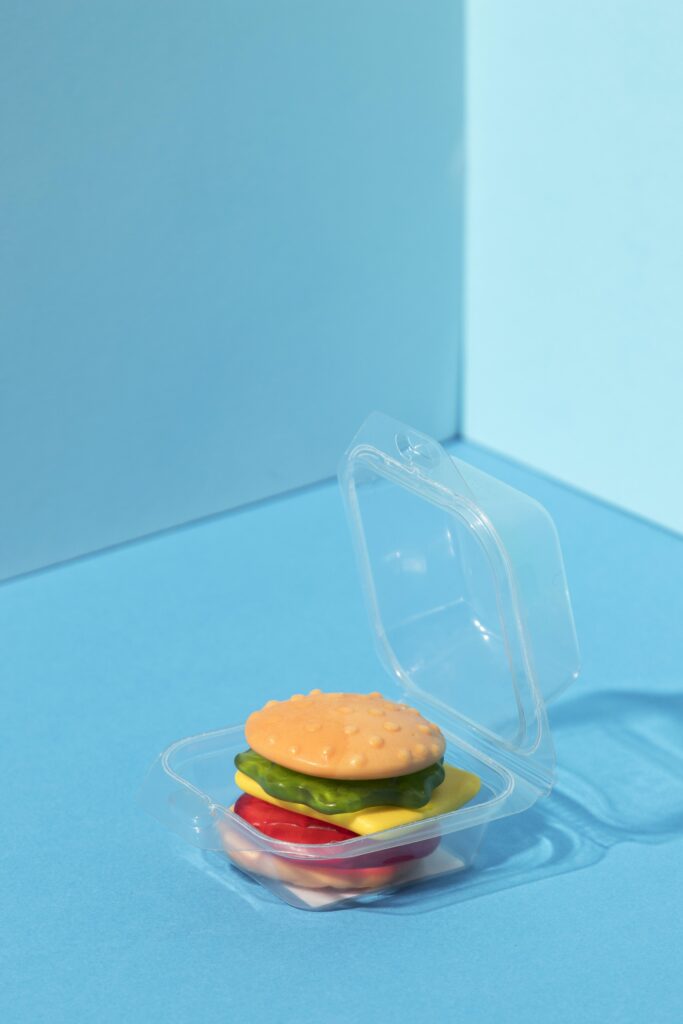
Optimizing Thermoplastics for Food Contact Applications
Overview
This case study explores the development of optimized polymer formulations designed specifically for food contact applications. The focus was on achieving compliance with rigorous safety standards, enhancing performance, and integrating sustainable practices into the manufacturing process. These initiatives come in response to growing consumer demand for safer and more environmentally friendly packaging solutions in a market projected to reach $500 billion by 2025.
Objective
The primary goal was to design thermoplastics that are safe, effective, and sustainable for food packaging. The project aimed to identify polymer blends that ensure safety compliance, enhance packaging performance, and align with global environmental goals.
Challenges
The main challenges included:
- Safety Compliance: Ensuring that the polymers used do not allow harmful chemicals to migrate into the food, adhering to stringent global regulations.
- Performance Enhancement: Improving the barrier properties of polymers to extend the shelf life of packaged food.
- Sustainability: Reducing the environmental impact of polymer production and usage, balancing functionality with eco-friendliness under increasing regulatory scrutiny.
Approach
The project leveraged Simreka’s AI predictive modeling system to conduct a comprehensive analysis of existing polymer formulations and their interactions with food substances. The approach involved:
- Data-Driven Analysis: Utilizing historical data from manufacturers to simulate different conditions, including variations in temperature and acidity, to evaluate how these factors affect polymer performance.
- Regulatory Compliance Testing: Ensuring all new formulations comply with stringent international standards, such as those set by the FDA in the U.S. and the European Union.
- Sustainability Integration: Incorporating bio-based materials to meet environmental objectives without compromising material quality or safety.
Results
The application of advanced modeling techniques and rigorous testing protocols led to several key outcomes:
- Safety Compliance: Newly developed polymers demonstrated migration levels well below the regulatory limits of 10 parts per billion (ppb), ensuring consumer safety.
- Enhanced Performance: The optimized polymers exhibited superior barrier properties, reducing oxygen and moisture transmission rates by over 70%. This improvement extended the average shelf life of food products by 30%.
- Sustainability: The use of bio-based materials in the polymer blends led to a 20% reduction in the environmental footprint of the packaging solutions.
Benefits
The successful design and optimization of these food contact polymers yielded significant benefits:
- Improved Food Safety: Compliance with global food safety standards minimized health risks, enhancing consumer trust.
- Extended Shelf Life: The increased longevity of food products reduces waste and supports cost efficiency for manufacturers and consumers.
- Cost-Effective Solutions: The overall cost reductions of up to 20% make these sustainable packaging solutions economically viable.
- Sustainable Practices: Achieving a 20% reduction in carbon footprint supports broader environmental objectives and responds to consumer preferences for greener products.
Conclusion
By focusing on safety, performance, and sustainability, manufacturers can meet the evolving demands of the food industry and consumers effectively. The innovative use of Simreka’s AI predictive modeling in the development process of thermoplastics for food contact applications exemplifies how data-driven approaches can revolutionize material formulation and achieve significant advancements in packaging technologies. This case study not only sets a benchmark for future developments in food contact polymers but also demonstrates the potential for alignment between industry practices and global sustainability trends.
